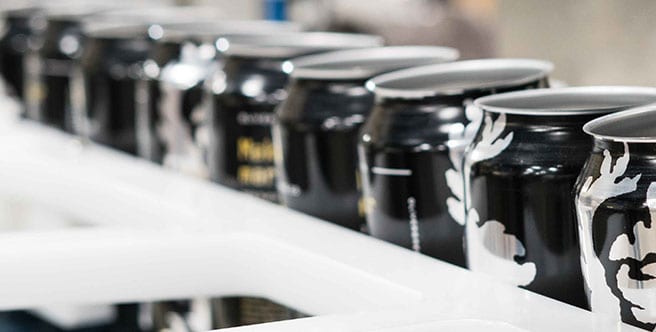Kyle Uebelhor: Hi. Here again with our executive interview series. I’ve got VP Berger with me from Hearth and Home Technology. VP, we’ve had a chance to know each other for quite a while now, and some of the things that you’ve done at Hearth and Home have been fantastic with transformation and the cultural elements of that. I’m kind of curious, what are some of the secret ingredients, the things that really matter when you’re thinking about transformation, especially in terms of your commercial team?
VP Berger: Yeah, sure. Thanks, Kyle. It really starts with why do you exist? I mean, some of this stuff may sound basic, but we have a saying, says easy, does hard, and if you can do the basics really well, there’s a lot of good success. So we make sure all of our members, which are employees, understand why we exist. So in Hearth Home Technologies, we’re there to enhance people’s lives where people live, work and gather. We specialize in fireplaces and stoves in multiple fuel categories, but we believe our products actually do make people’s lives better from a connection standpoint and sometimes from a heat utility standpoint. Once we get that through to the system, then we start building out the organization of how to do it. So it starts with your values. Being part of HNI, a publicly traded company, I’ve been with the company 27 years. We really do believe in our core beliefs, and I think those come from our values. And once we have the belief set that ultimately drives your actions. So for us, things that are really important, like customer, we focus heavily on that, integrity is everything. Believing there’s a better way. I say a big part of our collective success is lean and lean practices and driving that through members engagement and what they can do. Doing better for the planet. And then ultimately doing what you say. So it says easy to say those things, but if you know why you exist, you believe in these true belief systems and you can start putting actions in place to drive it, then you get into the fun part. And that’s what I call the organizational capabilities to go execute it. And once those three things are all set, then you’ve got to build in systems and processes that do all the plan, do, check, act to make sure you’re progressing.
Kyle Uebelhor: So plan, do, check, act. It’s kind of almost a systematic approach to thinking about transformation. It almost takes some of the mystery out of the process. As you think about that, how do you translate that to the mission? The mission that you really can attach to your both your members, your employees as well as I think at the end of the day, it’s all about the customers.
VP Berger: 100%. So we do have to focus on where we create value. And that starts with the consumer, in our mind. We’re primarily a B2B business, but we still have to make sure we’re solving consumers problems. And I think as we get into leadership it’ll kind of make sense how we connect all that. But to do what you’re saying in transformation, the first thing we have to do is prioritize. Again, I know it sounds simple, but we’re 11 brands, multichannel, global and vertically integrated. So it’s not like you can wake up and say you can work on everything with a couple thousand employees. We’re a firm believer in the model of priorities, people, structure and process. And as I break each one of them down, it answers your earlier question about how have you transformed? So we’ve grown from 280 million to north of 800 million, and we’ve done it profitably in different verticals with different structures.
Kyle Uebelhor: And in different challenging times recently, too.
VP Berger: Very different challenging times. So let me kind of break it down a little bit. Start with priorities. You have to agree on the vital few. And we have a very established long range planning process that we’ve been running for 15 years. And it does get us all as a senior team, aligned on what are the vital few. And in our cases, we have five specific growth initiatives that we’re running after. Once you have that, then you got to decide, do you have the right people to do it? Not so easy because you’re loyal to your people, but sometimes in things you’re trying to do, you need different capabilities, and it’s being honest with that. From there, you can put in the structure. And this is a little bit controversial because traditional leadership would say, here’s your structure, go fill it with people. That’s not how we do it. At HNI and HHT, we find great people and then we build the structure that’s going to help support the priority to make sure we can get it done. And then all of that, what I would say, is theory and organizational dynamics. The real work starts with process. And how do you establish repeatable processes that are going to measure our success as it relates to those vital few priorities, and you’re doing it with your member base. And I think with Hearth and Home, and you’ve worked with us enough, we’re a very collaborative, matrix organization, but we keep score and we are very competitive. And that’s when you say secret sauce, you shouldn’t be changing your vision, your mission, and your strategy very often, even your people. Those things should be set. You need to be working on the process to make sure you’re evolving the ball. And we’ve put in, from a lean standpoint, a very, very formal process that has a daily element, a weekly element, a monthly element, a quarterly element, and even an annual element all the way to the point that I get a chance to be in front of all of our members, to roll out kind of how we’re doing and where we’re going. And whether that’s virtual or whether that’s face to face, it’s kind of one more element to say, this is really where we’re going, because I’m a firm believer, no matter how many times you repeat the vital few, people don’t always hear it the same way. So we have to keep staying after it to make sure we get there.
Kyle Uebelhor: It is that, communicate, communicate and communicate consistently. You said something a moment ago, I want to pull a thread on just for a second because we find it very interesting, especially in certain sectors, industrial manufacturing being one of them. Lean. You think of a lean process, which does require us to be 80/20 or very focused. And there you can only do a few things. How do you determine those priorities? That very first top who is it and how does that come together?
VP Berger: Yeah, it’s collaborative with our parent company and with our team. It starts with a deep understanding of the consumer. It starts with a deeper understanding of what your own capabilities are. And then ultimately, it’s almost like a log rolling process saying, how are we going to grow? And we take those same exact processes to not just growth, we take it to lean manufacturing. We’ve taken it to sustainability. We’ve taken it to MCR and DEI. What’s the beautiful thing about lean? It’s kind of like customer service. If it’s in your heart, you can do amazing things with it. People that really get the customer, you can do amazing things. So when you say how, it’s actually a natural process, we’ve built the muscle memory that says we know we can’t do so many. Let’s talk about where the options are. And then finally we pressure test it with some outside help. So I’d be remiss if I didn’t say we’ve had some really good, executive coaches, in third parties to come in and look and say what’s really going on in your markets? It’s one thing to say you understand the consumer, but are you considering things that are secular or existential that you’re so close to it you’re not? And I’ll give you an example. So in our case, being in the fireplace business, fireplace relevance has become a pretty important thing that’s really a headwind. And that’s because of affordability and things that used to be options or standard are now options. And so the strategy had the pressure test, are we doing the right things to get in front of these consumers? Whether it’s a home buyer or a builder that’s in the process or an influencer or someone remodeling their home, we have to understand who these people are and market directly to them. Well, okay, so category awareness in fireplace is going to be one of my five priorities and has been. Who are you going to go to and how are you going to do it? Completely different capabilities from a marketing standpoint. We had tipped up a wonderful company around product and trade, but now we’ve got to get to the consumer. So it allows us to say, all right, now this gets back to priorities, people, structure, process. We’ve still got to be a great product company and lead. But if this truly is one of the vital few, what’s your structure look like and what are the people look like to do it?
Kyle Uebelhor: And it makes it difficult, I would imagine, as you just described, that you’ve got so many different parts of the buyer journey and influential points from consumer to actual decision maker to those who are part of it. It requires more complex teams, I would imagine, more complex skills, but also different types of teams. As you’re thinking about your go-to-market strategy.
VP Berger: I like to think of it, Kyle, a lot of cases people will be a little scared of that. I look at it as if you see how business is being done the way the consumer wants, then if you need complex teams, then build complex teams. You can’t not do still what’s right. This idea of market in companies, and we get caught with it too, this inside out thinking just gets you in the ditch. So we are more complicated. We do have skill sets on our team that I never thought we’d have. We have an entire new innovation team. We’re an industry leader in products. The last thing I thought is we need to bring in an innovation team. Well, we’ve gone out and hired a team of ten that have been there, done that with large, very public companies that think completely different. Like I said, some people would be scared about that. We kind of have the DNA to lean into the uncomfortable. And I think that’s part of the results that’s come out of it.
Kyle Uebelhor: It’s fascinating. I love it because you’re talking about innovation that is so far ahead of the curve so far above the funnel or the pipeline that puts you in a position to be successful three, five years down the line. But you can connect that back to your organization today and keep them focused, again, because I think it’s so easy to be distracted.
VP Berger: It is. And you’ve got to be able to tell the entire story of your three-year vision on one piece of paper.
Kyle Uebelhor: That’s got to be a challenge.
VP Berger: It can’t be more than that. And it has to be simple words, in English. And the reason why that’s important, the back end of why this success has happened. And I’ll tell you, we’re not there yet on innovation. We put the structure and the people in place. We’re building the processes. So we’re in the infancy stage there. We’re only 15 months into it. I like our chances, and I like what I’m seeing because it’s just a different way of thinking. But we have a lot more points to put on the board to get there. But this relates to everything else from the prioritization. When we put everything on one page and we set our targets, we are a metric driven organization. You can’t walk our corporate office and not feel like you’re in a manufacturing plant. We keep score everywhere. It’s visual everywhere. Our trade can see it, our consumers can see it. No matter what department or business unit you’re in, we know how we’re doing. The powerful part of policy deployment and understanding the prioritization, all the processes that need to get done to support that target are on that one piece of paper. So there’s 13 processes in Hearth and Home that are really driving priorities. And some of those are in the fireplace business unit, some of are in the stove business unit, some of them are in the distribution business. Each business unit is then building capabilities around that process, because we really believe that is what’s going to drive the needle when you do that and then roll it into people’s scorecards, so every department, just like a plant, has a scorecard, you’re now reporting out on the strategic priority, the process we believe we have to put in place to actually achieve it. And usually in there multiple years. And now every member, anyone that’s incentivized, their POA’s or their goals are now tied to those processes. So there’s no month, every month we do what’s called leadership walks. And all of our leaders report out on their boards, inside their scorecards, and then their job within a within a 24-hour period is then get it into their teams. So every month people know exactly how we’re doing. And if we’re red and you’ve been in our corporate office, if you’re red, there’s a requirement, no matter if you’re a digital marketer or you’re in accounting, that you have to show some sort of problem solving. And it’s right there on the board and visual. What we don’t, and it goes back to our lean roots. We don’t prescribe what tool you could do 8D, you could do Pareto, you could do Fishbone, you could do A3. That’s my point. If it’s in your heart, they’re all really good tools. And we will train whoever’s red on what tool we think they should use and bring them along. So this thing about secret sauce, there is none. It’s like, why do we have a good safety culture? Because we’re doing a lot of things, and we’re counting on a lot of people to do things right. When I look at success, we’ll never lead with a PnL or a balance sheet. Those are outcomes. We always are going to lead with what I talked about, priority, people, structure, process. We’re going to build a healthy ecosystem that gets alignment on goals and the business runs itself because now it’s not what we’re doing. If we’ve agreed on those, the accountability process runs itself. It brings the lean culture along. And when you tie it all back together, people want to be on a winning team. It’s that simple. And you can see it no matter where you are in the organization. How we’re doing.
Kyle Uebelhor: I can attest to it. I’ve seen it. Your member engagement, your member experience that connects so directly into your results, your customer experience. And at the end of the day, that MX or CX, tie back is so important. And I think it’s fascinating. I’m going to have one final question. I want you to put a crystal ball out there for you. What are we going to look at as we’re looking into 2024 and beyond? What’s next for you at Hearth and Home?
VP Berger: Oh, I think it’s innovation. I think we’ve built a very repeatable, process to know why we exist. Live out our values. And everything I was talking about in policy deployment, we have to be living out those values and beliefs. It’s the beautiful thing of why people stay there, and keep running that process. That’s allowed us in good times to be profitable and bad times to be very profitable. I know that sounds counterintuitive, but it’s true. If you have a good process, it fixes it. I think we just have to keep getting more and more consumer focused. We’re in a very mature industry, and as an industry leader, people want to take you out. And I think that’s healthy competition and the way we can get disrupted, products and services. So for us, we are going to invest a lot more money getting after what’s possible. We’re using words like what if? And that just is we’re such a process driven company, and we spend so much money in R&D and new product development. How about we do the same thing in the forward looking thinking, let’s put R&D in the front of the business like we have in the back of the business. And to me, innovation is the front of the business. Digital and consumer is the front of the business. So, I don’t think there’s any trade secret around that. I mean, there’s products we’ve just launched recently that people are like, where did that come from? It’s different and innovative. I think it’s just the start. And quite frankly, I think it’s fun. The more we can organize and spend around the consumer, the better for the trade, the better for our communities that are counting on us to build products. And obviously it’s good for all stakeholders from an outcome standpoint.
Kyle Uebelhor: VP, I’ll tell you, I always learn something fascinating from you. Thank you so much for the time today. This has been, as always, a great conversation and thanks so much and continued success.
VP Berger: Appreciate it bud, thanks.
Kyle Uebelhor: Thanks.





